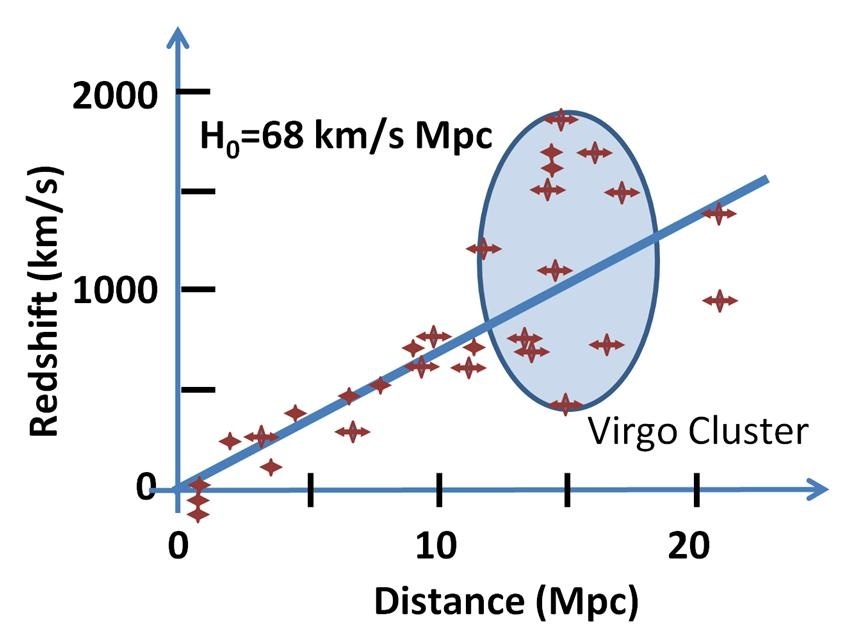A new study shows a way to use quasars to gauge distance in the early Universe.
The simple question of ‘how far?’ gets at the heart of the history of modern astronomy. Looking out across our galactic backyard into the primordial Universe, different yardsticks—often referred to as ‘standard candles’ —are used to gauge various distances, from near to far.
Now, astronomers may have another tool in their Universe-measuring arsenal. A recent study out of the Center for Astrophysics (CfA) looked at X-ray measurements of 2332 quasars in the Chandra Source Catalog compiled by NASA’s prolific Chandra X-ray telescope, versus their luminosity in the ultraviolet as seen in the Sloan Digital Sky Survey. The team found a tight correlation between the two factors… a correlation that extends back to quasars in the early Universe.
 Quasar 3c 273 in X-ray, along with its luminous jet. Credit: NASA/Chandra X-ray observatory.
Quasar 3c 273 in X-ray, along with its luminous jet. Credit: NASA/Chandra X-ray observatory.Whatever quasars are, they’re an exotic feature of the early Universe that we don’t see in the nearby cosmos today. The first quasar discovered was 3C 273 in 1963. With a high redshift (z=0.158) astronomers knew they were looking at something extremely distant and therefore intrinsically luminous. To give you some idea just how bright 3C 273 actually is, it has an absolute magnitude value of -27. That is, if you placed it at a distance of 10 parsecs away, it would compete with the Sun in the sky (and spell a bad day for the Earth if it were that close!)
The first ‘rung’ on the cosmic distance ladder is parallax, using observations from two different points in space and basic trigonometry to gauge distance. Using the Earth’s orbit as a baseline is also the basis for the parsec which—despite what Han Solo will tell you in a Mos Eisley Cantina—is a measure of distance, 3.26 light-years long.
But parallax will only get you so far. The next yardstick out was discovered by astronomer Henrietta Swan Levitt while examining variable stars in the Small Magellanic cloud in 1912. She noticed that a particular type of star known as a Cepheid variable pulses in a fashion that’s directly related to its luminosity. Find a Cepheid in a galaxy (as Hubble did in the Andromeda galaxy just over a decade later in 1923) and you can gauge its distance.
 Hubble’s Law, showing how redshift expansion increases with distance. Wikimedia Commons/Brews Ohare/Share-Alike 3.0 License.
Hubble’s Law, showing how redshift expansion increases with distance. Wikimedia Commons/Brews Ohare/Share-Alike 3.0 License.But for larger distances, brighter standard candles are needed. For these, astronomers use Type IA supernovae, as they flare and fade in a predictable fashion. Over the immense distances of hundreds of millions of light-years, cosmic expansion and spectroscopic redshift (noted as z) comes into play. This relation (known as Hubble’s Law) correlates velocity as proportional to distance due to the expansion of the Universe: the higher the redshift, the more distant the object.
Type IA supernovae are good back to about three billion years after the Big Bang; quasars as standard candles proposed in the study would be good to just 700 million years after the Big Bang, a vast improvement.
 Quasar 3C 273, as imaged by Hubble’s Advanced Camera for Surveys using an occulting coronagraph. NASA/ESA.
Quasar 3C 273, as imaged by Hubble’s Advanced Camera for Surveys using an occulting coronagraph. NASA/ESA.Quasars have another advantage, as hundreds of thousands of them have been discovered in recent years. As a standard candle, they provide not only a good overlap with more distant Type 1A supernovae, but are also a good backup check for distance, as they are separately distinct cosmological processes.
Earthbound sky surveys to come, such as the Vera Rubin Observatory, and X-ray observatories already in space, such as NuSTAR and Chandra are bound to discover more quasars in the early Universe, putting their use as standard candles to the test.
Catching a Quasar
You can, with a bit of skill and dark skies, observe quasar 3C 273 from your driveway with a good-sized telescope. At magnitude +12.9 it won’t look like much more than a nondescript faint star… but it’s amazing to think that you’re seeing photons that left their source 2.4 billion years ago (!) back in the Archean Eon on Earth, around the start of the Great Oxygenation Event.
 The wide field of view for quasar 3C 273. Credit: Stellarium.
The wide field of view for quasar 3C 273. Credit: Stellarium.The coordinates for 3C 273 are: Right Ascension (R.A.) 12H 29’ 07,” Declination 02 degrees 03’ 09”.
And to think, in just over half a century since discovery, quasars have gone from enigmatic objects to key standard candles for probing the early Universe.
Lead image: An artist’s impression showing the distant quasar P172+18 and its radio jets. Credit: The ESO.

